R-model Ducatis have traditionally been the flagships in Ducati's range. And they've carried the price tags to match. The previous-generation, $30,000 999R was one of our favorite motorcycles, with tractability, suspension and steering precision that let it rival much more powerful four-cylinder literbikes. The $40,000 1098R doesn't just rival them; it leaves them for dead.
Of course, for that much money, it had better. Raising the price of the R-model by $10K seems like heresy, Ducati rubbing our noses in it, but the increased performance more than justifies it. And there's been no shortage of well-heeled buyers lining up to own one.

Only Ducati could build this motorcycle. Or would. We expected the 1098R to be special, a World Superbike-spec version of the standard 1098 introduced in 2007. But we never expected it to be this special. | 
Testastretta Evoluzione V-twin's sand-cast cases corral 163 rear-wheel ponies. | 
The right stuff: Ohlins fork, Brembo radial brakes and 10-spoke Marchesini wheel. |
Impetus for creating the 1098R was the change in World Superbike regulations allowing 1200cc twins to compete alongside 1000cc fours. (The AMA dragged its heels but finally acquiesced.) This may sound unfair to those who are new on the scene, but throughout the 750cc Superbike era twins were allowed 1000cc-plus a weight break. It's testimony to Ducati Corse's efforts and Troy Bayliss' dogged determination that they managed to win a world title after the fours were allowed 1000cc as well.
But Ducati claimed its 1000cc Superbikes were too close to their mechanical limits, running what was described as a MotoGP state of tune. Take that to mean the engines didn't last long. That's costly, and with the small Italian manufacturer also competing in MotoGP, its resources were stretched too thin. The company petitioned the SBK organizers to raise the displacement limit for twins, and after much debate, the change went through. There were, however, a few stipulations: Twins would have to retain their stock valves and connecting rods, run 50mm intake air restrictors and carry an additional 6 kilograms (13.2 pounds). Furthermore, these numbers could be adjusted throughout the season depending on race results.
To take the 1098cc Testastretta Evoluzione engine to 1198cc, the bore was increased from 104 to 106mm and the stroke from 64.7 to 67.9mm. That bigger bore allowed 2mm larger intake and exhaust valves at 44.3 and 36.2mm, respectively, while new alloy three-ring pistons with double-ribbed undercrowns bump compression from 12.5:1 to 12.8:1. Superfinished rocker arms and a deep gas-nitrided crank increase strength and reduce friction. Numerous weight-saving measures such as sand-cast cylinder heads and cases, titanium connecting rods, valves and retainers, an intricately machined crankshaft and carbon-fiber cambelt covers shave 4.8 lbs. compared to the standard 1098 engine and 12.3 lbs. compared to the 999R. Impressively, the service interval is 12,000 kilometers (approximately 7500 miles), same as all other current Ducatis.
 | 
Digital dash is more entertaining than Wii, with readouts for everything including traction control. | 
hlins shock is the latest twin-tube TTX, with both compression and rebound in the reservoir. |
The fuel-injection system was upgraded, too, the elliptical throttle bodies growing from 60 to 63.9mm. A twin-injector setup sees the main central injector provide a set amount of fuel for each cycle, while the secondary injector is called in whenever more fuel than that is required. Owing to another change in the SBK rules, the R-model finally gets a slipper clutch this year, plus third through sixth gear ratios.
Most noteworthy of all, however, is the addition of Ducati Traction Control, said to be identical to that employed on the MotoGP and World Superbike racers. Inactive until the included racing CPU is installed, there are eight positions available, level 1 being the least intrusive and level 8 the most. (It can also be shut off, but don't go there.) In simple terms, the system compares the speeds of the front and rear wheels, factors in other parameters such as rpm and throttle position, and adjusts fuel and spark to limit torque whenever it senses the rear tire is spinning-or about to. Saved by technology!

Crossed-up wheelies on the 1098R are as simple as opening the throttle, turning the front end-and forgetting about the $40K price tag.
Chassis-wise, the R-model retains the standard 1098's geometry but boasts uprated Ohlins suspension and steering damper, the shock the latest TTX (for Twin Tube) design. This is effectively a tube within a tube-a solid piston pushing damping oil from one tube through the applicable shim stack to the other. The advantages of this setup are positive pressure buildup in both directions, much lower gas pressure for reduced cavitation and friction and the compression and rebound adjusters don't affect one another. Additionally, the shim stacks are located in the reservoir, meaning they can be removed and changed without dismantling the shock-a real boon for race mechanics.
Owing to the aforementioned engine changes plus some carbon-fiber body parts, an alloy subframe for the solo seat, a Ti muffler and forged Marchesini wheels, the R-model weighs considerably less than a standard 1098, tipping the scales at 422 lbs. wet and 397 lbs. dry.
I was fortunate to attend both the 1098R's world press introduction at Jerez, Spain, and the U.S. intro at Barber Motorsports Park in Birmingham, Alabama, after which Motorcyclist exclusively received a testbike to ride on the street. First stop was the dyno, where the stock machine pumped out an impressive 155.6 bhp and 87.2 lb.-ft. of torque at the rear wheel. U.S.-model 1098Rs will be sold with full 70mm race pipes and a dedicated CPU, but those weren't yet available, so our testbike came with the slip-ons the rest of the world will get. So equipped, it churned out an astounding 163 bhp and 90.3 lb.-ft. Forget torque and tractability, the 1098R's peak power is right there with the liter-class fours!
You feel that power as soon as you let out the clutch lever-this Ducati pulls with the urgency of a built Harley. (Those of you who have never ridden a built Harley are likely laughing at this remark, but trust me here.) Wheelies aren't a matter of if, but when, and in fact you have to work to keep the front end down. Best turn that right wrist slowly, get your foot over the brake pedal, and it wouldn't hurt to hunch down over the front, either. On the street you find yourself dialing in almost no throttle and slipping the clutch from stoplights-and you're still accelerating like gangbusters. This thing really is ferocious, so it's probably a good thing that the high price will keep young, inexperienced riders away.
Jump on the freeway en route to the local mountains and you promptly discover the 1098R is a rack, with a bum-high, stretched-out riding position. In stock trim, the suspension is set so firm the bike rattles your teeth over bumps and expansion joints. Of course it does-what did you expect? Fuel mileage and range are abysmal, the low-fuel light illuminating in as little as 85 miles. You'll forget all this as soon as you point the bike down a twisty mountain road.
Hold on tight-the standard 1098 is plenty fast and wheelie-happy, and the R-model makes a mockery of it. Barely crack open the throttle and the bike rockets from corner to corner, wheelying everywhere and making the straightaways feel very short indeed. And with the strong radial-mount Brembo Monobloc calipers actuated by a radial master cylinder, seldom are both wheels on the ground. Handling is superb, with precise steering and incredible feedback from both ends. The only glitch is a somewhat high center of gravity that makes the bike fall into corners and stand up slightly on the brakes. You need to ride it like you stole it-which isn't a bad idea, actually.
You can't begin to use all that power on the street, so it's on the racetrack where the 1098R comes into its own. As does the traction control. At both tracks we started with the DTC at level 4, and at first thought we were hitting the rev limiter early and often. Only after we got up to speed, and especially after the tires began to wear, did we notice how the system really worked. Accelerating off the low-gear hairpins in particular, the bike would stutter and pop and then wheelie, limiting wheelspin but actually making it harder to hold on to. Though DTC doesn't use any sort of bank angle, there must be some sophisticated algorithms going on because when you pick the bike up off a corner, the traction control backs off noticeably. Probably the system is sensing the change in rpm due to the different circumference of the tire from leaned over to straight up and down.
Raising DTC to level 8 was laughable, as it cut in way too often-though it would probably work well in the wet. And lowering it to level 1 was too far in the other direction, as the rear end stepped out uncomfortably far before DTC cut in-at least too far for my comfort. Level 2 worked best for me at the racetrack, as it let the rear tire spin just enough to keep the front end down and allow me to steer with the rear a bit. (Read Jeremy McWilliams' story on page 86 for a Pro racer's perspective.)
If the 1098R has one shortcoming, it's the same as all twins before it: a low redline. This gives the bike what I jokingly refer to as "broad power over a narrow range." With peak power at 9750 rpm and the rev limiter cutting in (too abruptly) at 10,500 rpm, the fours have much more overrev, which lets them hold a gear longer. On the flipside, the 1098R has so much low-end grunt you can run it a gear tall almost everywhere, and it will pull it.
So, nothing but rants and raves-can the 1098R really be that good? Consider the results from the first two rounds of the 2008 World Superbike Championship. Riding a bike that was largely stock save for two-ring pistons, a re-balanced crank, lighter flywheel and altered internal gear ratios, Bayliss has won three of four races. Already the competition is up in arms, and with KTM poised to enter the series with its new 1190cc RC8 twin in 2009, the Japanese will surely be asking to raise the twins' weight limit and/or reduce the size of their air restrictors. Welcome to NASCAR on two wheels; what's next, air dams?
We'll leave you with a quote from Ducati PR honcho Francesco Rapisarda: "The 1098R is a racebike, pure and simple. It raises the bar and sets the world standard for sportbikes."
We couldn't agree more.

Forty-three years young and Jeremy McWilliams is still world-class fast.
Jeremy McWilliams on the Ducati 1098R
The former MotoGP phenom rates the world's best production superbike
Even against a slick-shod Michel Fabrizio, who now rides alongside Troy Bayliss for the Xerox Ducati World Superbike team, Jeremy McWilliams showed his competitive spirit and left everyone for dead at the Ducati 1098R's world press introduction at Jerez, Spain. And that was on standard Pirelli Corsa Pros. The 43-year-old from Belfast, Ireland, never ceases to amaze. Here are his impressions:
For my mass, all 154 pounds of it, the fork needed one extra turn of preload for the hard-braking areas. The shock needed more preload and a click or two of compression to hold a line on corner exits. The chassis feels similar to previous R-models. It needs to be taken by the horns like Troy rides his. Brake late, fire it on its side and get it onto the fat part of the tire. It needs to be steered with commitment, but it does little wrong anywhere else.

If it's got blue-and-white curbs, it's either Donington Park or Jerez. Sunshine suggests the latter.
The ECU provides adjustable traction control, the same system used on Troy Bayliss' Superbike and Casey Stoner's MotoGP bike. We started with the system on level 4 of 8, with 8 being the most intrusive. To make the bike spin more and cut out less, I went from 4 to 2. The DTC is awesome! Crack the throttle mid-corner at level 4 and the ECU cuts subtly, with the sound of a slight misfire. The system compares wheelspin to what the rider wants, so you can increase throttle and the system lets the bike slide a little farther before cutting in again. I wasn't able to tell if DTC let me lap any quicker, but I could feel the benefit if I made a cock-up. You either put your faith in this system or ride conventionally.
The traction control is very nice if you're into track days or fussy about not lobbing your pride and joy on some wet roundabout. You only have to worry about low-siding or losing the front. What amazed me was that I could wheelie the 1098R the length of both straights at Jerez. The front wheel stopped, but the DTC didn't kick in. Clever, eh? The slipper clutch is one of the best yet. It let me go from fifth to second at 10,500 rpm as fast as I could change. No over-rev and no locking up-just enough engine braking to slow and load the front perfectly.

Former AMA and World Superbike Champion Scott Russell attended the U.S. press launch of the 1098R, and said the bike could have won every race he'd ever been in, including the 500cc GPs. He's planning to come out of retirement to race a Jamie James Yamaha in Superstock at Daytona this year.
The engine literally pulls from nothing. It takes time to adjust to the power. I kept getting caught out-before I had time to think about changing gear, the limiter cut in and all of a sudden warp was halted. The limiter saves the valves from bouncing off the pistons, so the R stops in its tracks if you're not paying attention. It hates going beyond 10,500 rpm.
The first two gears are from the standard 1098 and they're a little short. I would've shortened overall gearing to use fifth on the straights at Jerez, but then second would've been unusable in the hairpins. Third through sixth are longer ratios. If I let the rpm wander past 10,500, it took a moment to compose itself. I'd select third and a slight hesitation would let Fabrizio gain 10 yards. He was shifting earlier and his drive was visibly better. When I used the 7000- to 10,000-rpm range, my lap times improved by 1.5 seconds. Point proven.
![Off The RecordTim CarrithersIf your financial situation looks anything like mine, $39,995 sounds like an insane amount of money to spend on a motorcycle. I mean, is it really worth 3.448 '08 Honda CBR1000RRs? The 1098R is for people who can spend that much on a watch. For the rest of us, the sad fact is the bike really is that good. You could hand Kevin Erion the keys to that new 1000RR and a check for $28,396, but it's hard to imagine the result could be any better. The Ducati is essentially miserable almost anywhere but the track or some deserted stretch of serpentine pavement, but it is so close to perfect in either of those environments that imperfections surfacing elsewhere aren't worth talking about. And since the price of admission is 2.025 times what I paid for my car, neither is the prospect of owning one.Age: 49 Height: 6' 3 Off The RecordTim CarrithersIf your financial situation looks anything like mine, $39,995 sounds like an insane amount of money to spend on a motorcycle. I mean, is it really worth 3.448 '08 Honda CBR1000RRs? The 1098R is for people who can spend that much on a watch. For the rest of us, the sad fact is the bike really is that good. You could hand Kevin Erion the keys to that new 1000RR and a check for $28,396, but it's hard to imagine the result could be any better. The Ducati is essentially miserable almost anywhere but the track or some deserted stretch of serpentine pavement, but it is so close to perfect in either of those environments that imperfections surfacing elsewhere aren't worth talking about. And since the price of admission is 2.025 times what I paid for my car, neither is the prospect of owning one.Age: 49 Height: 6' 3]()
Off The Record
Tim Carrithers
If your financial situation looks anything like mine, $39,995 sounds like an insane amount of money to spend on a motorcycle. I mean, is it really worth 3.448 '08 Honda CBR1000RRs? The 1098R is for people who can spend that much on a watch. For the rest of us, the sad fact is the bike really is that good. You could hand Kevin Erion the keys to that new 1000RR and a check for $28,396, but it's hard to imagine the result could be any better. The Ducati is essentially miserable almost anywhere but the track or some deserted stretch of serpentine pavement, but it is so close to perfect in either of those environments that imperfections surfacing elsewhere aren't worth talking about. And since the price of admission is 2.025 times what I paid for my car, neither is the prospect of owning one.Age: 49 Height: 6' 3" Weight: 210 lbs. Inseam: 34 in. | ![Off The RecordBrian CattersonInevitably, buyers will compare the price of the Ducati 1098R to that of Japanese literbikes and cry foul, like Tim just did, and there's little argument for that. But for those who can afford the high price of admission, I'll suggest a more favorable comparison: The $39,995 1098R costs just .551 times as much as the $72,500 Desmosedici RR. Sure, the latter is an ultra-exclusive collectible likely only to increase in value. But if you're actually going to ride it, the 1098R is a better bet. For one, you don't have to worry about being bike-jacked, or having entire message-board threads devoted to what a yutz you are for wadding it. And second, I'd be willing to wager that, thanks in large part to traction control, the 1098R will get around a racetrack quicker. Now that's a comparo I'd like to do!Age: 45 Height: 6' 1 Off The RecordBrian CattersonInevitably, buyers will compare the price of the Ducati 1098R to that of Japanese literbikes and cry foul, like Tim just did, and there's little argument for that. But for those who can afford the high price of admission, I'll suggest a more favorable comparison: The $39,995 1098R costs just .551 times as much as the $72,500 Desmosedici RR. Sure, the latter is an ultra-exclusive collectible likely only to increase in value. But if you're actually going to ride it, the 1098R is a better bet. For one, you don't have to worry about being bike-jacked, or having entire message-board threads devoted to what a yutz you are for wadding it. And second, I'd be willing to wager that, thanks in large part to traction control, the 1098R will get around a racetrack quicker. Now that's a comparo I'd like to do!Age: 45 Height: 6' 1]()
Off The Record
Brian Catterson
Inevitably, buyers will compare the price of the Ducati 1098R to that of Japanese literbikes and cry foul, like Tim just did, and there's little argument for that. But for those who can afford the high price of admission, I'll suggest a more favorable comparison: The $39,995 1098R costs just .551 times as much as the $72,500 Desmosedici RR. Sure, the latter is an ultra-exclusive collectible likely only to increase in value. But if you're actually going to ride it, the 1098R is a better bet. For one, you don't have to worry about being bike-jacked, or having entire message-board threads devoted to what a yutz you are for wadding it. And second, I'd be willing to wager that, thanks in large part to traction control, the 1098R will get around a racetrack quicker. Now that's a comparo I'd like to do!Age: 45 Height: 6' 1" Weight: 210 lbs. Inseam: 34 in. |
|
Dyno
Just look at those curves. The quickest-revving twin in the business makes 80 lb.-ft. and 107 bhp at 7000 rpm, and the party is just getting started. From there on, your biggest challenge is keeping the front Pirelli on the pavement.
Ergos
Bars situated close to the seat and 18 inches of legroom are best suited to medium-height humans, short distances and high rates of speed. The end result is quite humane for what's essentially a World Superbike contender with a license plate.

2008 Ducati 1098R
Price: $39,995
Hard Parts |
|
|
Tech Spec
Engine type: l-c 90-degree V-twin
Valve train: DOHC, desmo 8v
Displacement: 1198cc
Bore x stroke: 106.0 x 67.9mm
Compression: 12.8:1
Fuel system: Marelli EFI
Clutch: Dry, multi-plate slipper-type
Transmission: 6-speed
Frame: Tubular-steel trellis with single-sided aluminum swingarm
Front suspension: 43mm Ohlins fork, adj. spring preload, comp. and rebound damping
Rear suspension: Single Ohlins TTX shock, adjustable for spring preload, compression and rebound damping
Front brake: Dual four-piston Brembo Monobloc calipers, 330mm discs
Rear brake: Dual-piston Brembo caliper, 245mm disc
Front tire: 120/70ZR17 Pirelli Dragon Supercorsa SP
Rear tire: 195/55ZR17 Pirelli Dragon Supercorsa SP
Rake/trail: 24.5/3.8 in.
Seat height: 32.2 in.
Wheelbase: 56.3 in.
Fuel capacity: 4.1 gal.
Weight (tank full/empty): 422/397 lbs.
Measured horsepower: 155.8 bhp @ 9500 rpm
Measured torque: 87.2 lb.-ft. @ 7750 rpm
Fuel mileage (high/low/avg): 33/30/31 mpg
Colors: Red
Available: Now
Warranty: 48 mo., unlimited mi.
Contact: Ducati North America10443
Bandley Dr.Cupertino, CA 95014
408.253.0499
http://www.ducatiusa.com
Get more in http://www.motorcyclistonline.com/.





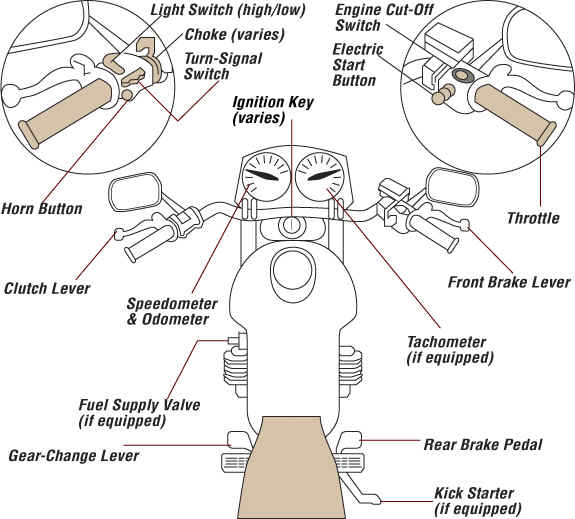
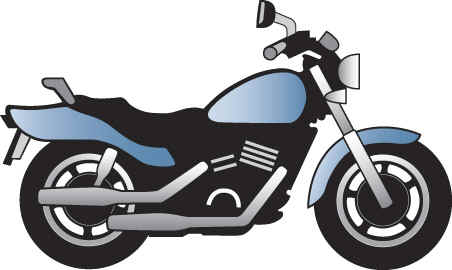



















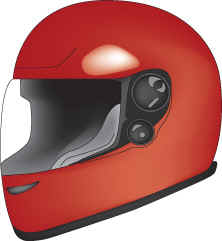
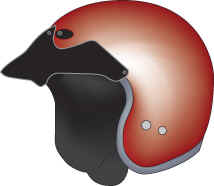
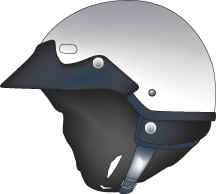





.jpg)





















